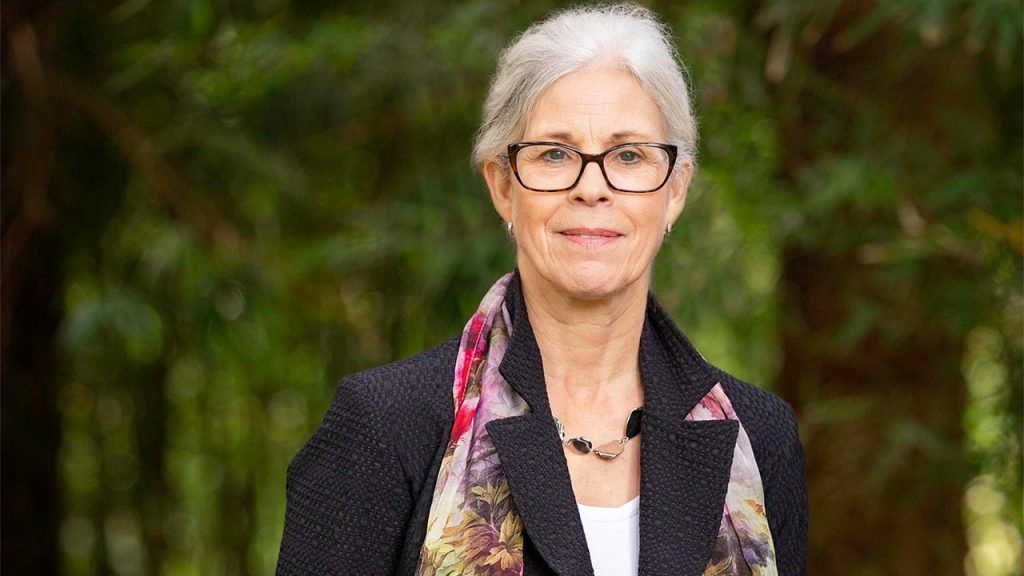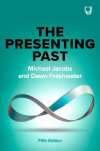The Presenting Past: ChatGPT a repeating pattern?
I have been interested in pattern recognition for as long as I can recall.
Having trained as a psychodynamic psychotherapist, counsellor and supervisor early in life, I had the opportunity to recognise, reflect and deeply question my own childhood familial patterns, manifest through repeating stories, narratives, and behavioural plot lines.
The first edition of the text ‘The Presenting Past’ by Michael Jacobs was foundational to both my training as a therapist, to my self-awareness and to my understanding of the role of the unconscious in the often problematic repeating of life patterns.


No wonder then that I quickly arrived at an embodied resonance of the T.S Eliot (1942) quote from Little Giddings: ‘We shall not cease from exploration, and the end of all our exploring will be to arrive where we started and know the place for the first time’.
As a therapist and supervisor it was deeply meaningful privilege to bear witness and to others recognising, often painfully, then appreciating, and returning to the same painful place, usually experiencing it differently. At the same time I was working and researching with young offenders and prison health care staff. This brought to life another perspective on repeating patterns. Recidivism was not only a significant problem, but often the preferred outcome for many highly distressed young people. I realised through experience of working across disciplines and across settings and contexts, that just as we accumulate data-sets in specific domains, we can, and do, combine those data-sets in order to draw novel and creative hypotheses, to innovate and to advance in solving new, and emerging, societal and individual concerns. It is then the case that out of two apparently individual and discreet data-sets, a third new data-set emerges. Occasionally leading to an enormous leap, as in recent technological advancements, or to individual epiphanies.
Imagine my delight and trepidation when in 2021 Michael approached me to be involved in the fifth edition of his original text. The very one that had been so influential in my own life some three decades ago. Had I come full circle? An opportunity to explore again as if for the first time? We were both certainly invited to explore new terrain through the rewriting of the latest edition, learning once again that the map was not the territory!
Enter ChatGPT! Well actually, any generative AI tool.
Counselling and Psychotherapy practice, theory and philosophy has changed dramatically in a very short time relative to its early development. In addition pathologies, attachment behaviours, relationships, sexuality, the experience of power and agency have all also undertaken revisions of gargantuan proportions. Many of these leaps and bounds can be viewed as closely associated with the advances and expansion of our digital lives and augmented realities. And of course generative AI.
What is interesting to me about such advances is that fundamentally, they are at base, heavily dependant on pattern recognition, indeed this is essential to the recent phenomenon ChatGPT.
What do counselling and psychotherapy practice and ChatGPT have in common?
Lest we forget, we are all in the process of both being and becoming. All the more important to hold our patterns, conscious and unconscious, lightly, so as not to be too identified with them, and to ensure that we and our lives are not defined by them.
This is as true for those patterns that are surfaced through self-learning, as it is for pattern recognition software that is currently in pursuit of redefining what it is to be human.
by Dawn Freshwater
As a therapist and supervisor it was deeply meaningful privilege to bear witness and to others recognising, often painfully, then appreciating, and returning to the same painful place, usually experiencing it differently. At the same time I was working and researching with young offenders and prison health care staff. This bought to life another perspective on repeating patterns. Recidivism was not only a significant problem, but often the preferred outcome for many highly distressed young people. I realised through experience of working across disciplines and across settings and contexts, that just as we accumulate data-sets in specific domains, we can, and do, combine those data-sets in order to draw novel and creative hypotheses, to innovate and to advance in solving new, and emerging, societal and individual concerns. It is then the case that out of two apparently individual and discreet data-sets, a third new data-set emerges. Occasionally leading to an enormous leap, as in recent technological advancements, or to individual epiphanies.
Imagine my delight and trepidation when in 2021 Michael approached me to be involved in the fifth edition of his original text. The very one that had been so influential in my own life some three decades ago. Had I come full circle? An opportunity to explore again as if for the first time? We were both certainly invited to explore new terrain through the rewriting of the latest edition, learning once again that the map was not the territory!
Enter ChatGPT! Well actually, any generative AI tool.
Counselling and Psychotherapy practice, theory and philosophy has changed dramatically in a very short time relative to its early development. In addition pathologies, attachment behaviours, relationships, sexuality, the experience of power and agency have all also undertaken revisions of gargantuan proportions. Many of these leaps and bounds can be viewed as closely associated with the advances and expansion of our digital lives and augmented realities. And of course generative AI.
What is interesting to me about such advances is that fundamentally, they are at base, heavily dependant on pattern recognition, indeed this is essential to the recent phenomenon Chat GPT.
What do counselling and psychotherapy practice and ChatGPT have in common?
Lest we forget, we are all in the process of both being and becoming. All the more important to hold our patterns, conscious and unconscious, lightly, so as not to be too identified with them, and to ensure that we and our lives are not defined by them.
This is as true for those patterns that are surfaced through self-learning, as it is for pattern recognition software that is currently in pursuit of redefining what it is to be human.
The broken bridge
In my book Coaching Women, Changing the System not the Person I use the metaphor of a broken bridge when describing women’s path into leadership. It looks fine at the start when you set out on the bridge, it’s ruptured in the middle, and then for those that make it over the bridge, it looks fine to most of them too. So where is the incentive to change things?
The ruptured middle
Younger women’s optimism tends to get dented when they reach their 30s. It’s a manic time when big life decisions tend to get made. Choosing a life partner, settling down & making a home, deciding whether to have kids. And all this when being assessed for leadership roles. My experience of coaching women as they become mothers is that this is when they notice that the bridge is ruptured and that previously hidden barriers to career success start to loom up in plain sight. You might have a boss that bends over backwards to ensure you don’t get too challenging work during this time. Is this considerateness or benevolent bias? Your company might shout aloud about their flexible work policy but overlook you for promotion if you elect to go part-time. You just can’t fit in those informal drinks down the pub any more due to a much less elastic day.
The problem is that women at this stage are too busy and exhausted to be vocal about getting the bridge repaired, about changing the system.
The other side
On the other side of the bridge are those women who have “made it”. They are now leaders and broadly fall into two camps. Firstly, there’s the anti-role models who are described as having “outmanned the men” and don’t have much truck with women that want flexibility tending to think that they should just “man up” a bit. They’re no help at all when it comes to drawing attention to changing the system.
However, there is another group of women leaders, women who have seen just how ruptured the bridge can be, who can see that things need to change and recognise that it should be an aspiration for men and women to be able to combine both a demanding job and a fulfilling personal life.
The good news
And the good news is that men too are pushing back on “greedy jobs” that demand too much of their precious time. It’s only by more people aligning on the need to change the culture of overwork that we have become accustomed to that we will ever level the playing field or sticking to my bridge analogy, not just repair the bridge but redesign it completely.
So, let’s still push for equity and, of course, embrace those examples where we do see equity. A big hug for the fabulous trio at the top of Insurer Aviva where the Chair, the CEO and the CFO are all women. Or take a look at Finland’s government where most of the key Heads of State jobs are held by women."


The Presenting Past

